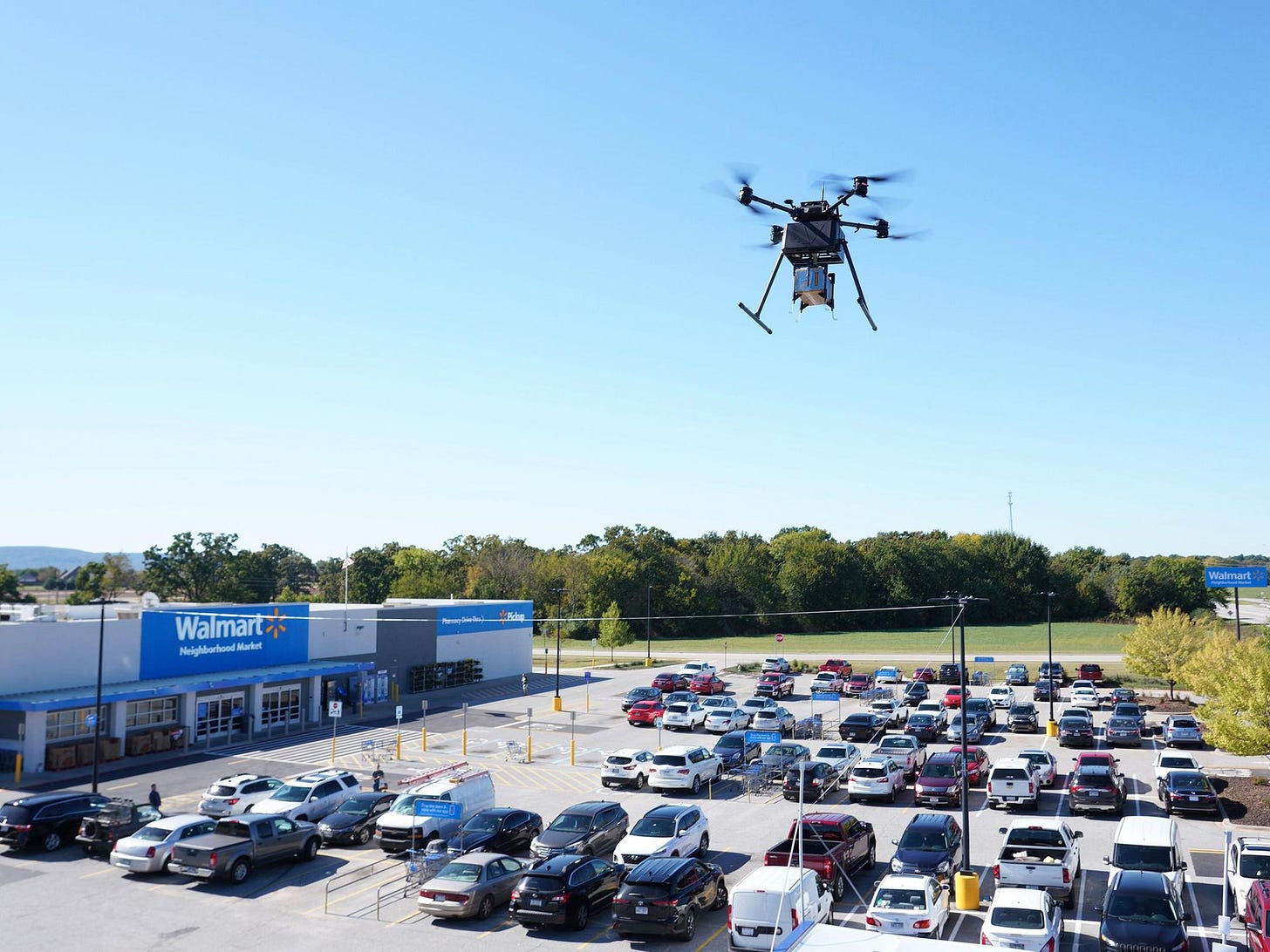The Individual Sovereign - Decentralized Airspace Control
Property Rights Ignored, Means Fortunes Taken And Centralized Actors Rewarded
I got a call recently from one of the United States’ largest landowners. They asked:
”Why are commercial drones that have received licenses from the FAA to fly, transiting through my airspace without permission and without paying for access - what’s going on?”
Is this government overreach, or is it commercial entities encroaching on people's rights and freedoms because they don’t want to pay for access, or something else?
Understanding the hoops commercial drone companies need to jump through to become operational is essential. But this is just the normal course of business. The fundamental truth is that all these certificates, blessings, and deliveries of medicine to old folks' homes do not give drones a special place in the US Constitution or remove them from operating legally.
The Certifications
Commercial drones are pushing to fly Beyond Visual Line Of Sight (BVLOS), the next frontier in unmanned aircraft operations. BVLOS reduces costs by eliminating the need for human observers, but it requires FAA approval and access to private airspace.
The FAA regulates BVLOS using rules and regulations that would make the most bureaucratic civil servant rejoice. These include Part 107, Part 91, and Part 135. So to fly BVLOS, drone operators need a Part 107 Remote Pilot Certificate, a Part 61 manned aircraft pilot license (in some cases), training on detect-and-avoid systems, a special airworthiness certificate or FAA exemption, and a Certificate of Waiver or Authorization (COA)
Part 91 governs larger drones and advanced operations, like cargo drones. Part 135 is for drone delivery services like Walmart and Amazon, which require certification to carry goods for hire. However, certification doesn't exempt drone companies from respecting private airspace and obtaining permission.
To scale BVLOS operations, drones may need FAA airworthiness approval, including type certification or special airworthiness certificates. Type certification involves a rigorous engineering review, while production certificates enable mass production of certified drones.
These operations require navigating many FAA regulations, but certification doesn't guarantee unrestricted access to private airspace. Drone companies must still respect property rights and obtain permission to operate.
Where the drones are manufactured is now becoming an even bigger issue, with bans on drones manufactured in certain countries for police work due to national security risks and tariffs changing incentives.
Keep reading with a 7-day free trial
Subscribe to Where is my flying car? to keep reading this post and get 7 days of free access to the full post archives.





